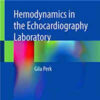Longitudinal Vasoactive Inotrope Score Trajectories and Their Prognostic Significance in Critically Ill Sepsis Patients
sciencedirect.comThis study offers significant insights into the prognostic value of VIS trajectories in sepsis patients.
The identification of distinct trajectory patterns not only underscores the heterogeneity in sepsis but also emphasizes the importance of personalized management strategies.
The findings underscore the potential of VIS trajectory monitoring in predicting 28-day outcomes and in guiding clinical decision-making in ICU settings.
Among 6,802 sepsis patients who met the inclusion criteria, four distinct VIS trajectory patterns were identified: “Low-Decreasing” (52.1%), “Mild-Ascending” (13.2%), “Moderate-Decreasing” (23.0%), and “High-Stable” (11.6%).
The 28-day survival analysis demonstrated that, compared to the “Low-Decreasing” group, the “Mild-Ascending” group had a hazard ratio (HR) for mortality of 2.55 (95% CI: 2.19–2.97, P < 0.001), the “Moderate-Decreasing” group had an HR of 1.20 (95% CI: 1.03–1.41, P = 0.021), and the “High-Stable” group presented the highest risk with an HR of 4.19 (95% CI: 3.43–5.12, P < 0.001).

















